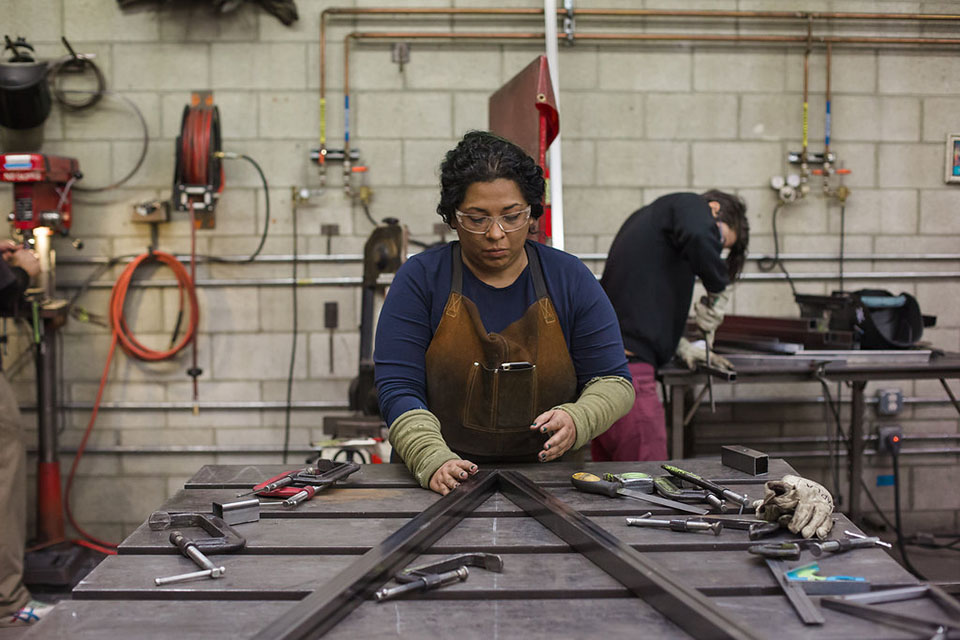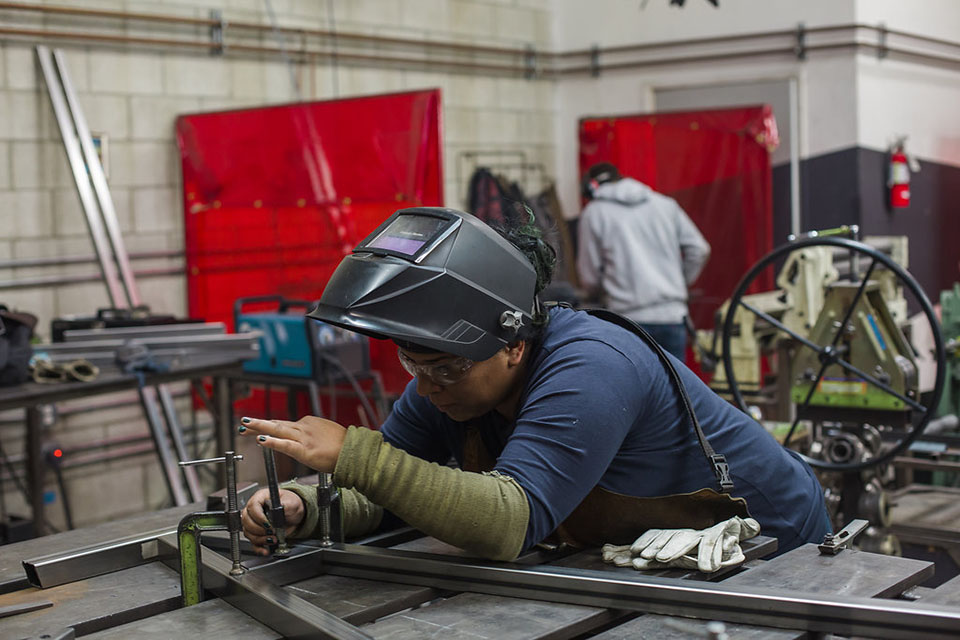CSUN Professor’s Art Speaks for Immigrants
At a young age, California State University, Northridge Central American studies professor and Los Angeles-based artist Beatriz Cortez was exposed to the tragedy of the Salvadoran civil war. The hazardous conditions forced her to leave the place where she grew up.
Today, Cortez channels those experiences into art that explores the memory and loss of the war and its aftermath, and the struggles of immigrants like herself.
Cortez has exhibited her work in Los Angeles, San Francisco, Texas, New York, Minneapolis, Miami and Washington, D.C., and internationally in El Salvador, Costa Rica, Guatemala, Ecuador and China. Her most recent exhibit, The Cosmos, was displayed March 28 at the Tongva Park in Santa Monica.
Cortez developed an early love for the arts. During her childhood, she took art classes, such as painting, dancing and music classes, and completely fell in love with art. In the late 1980s, Cortez pursued art at Universidad Dr. Jose Matias Delgado in El Salvador. However, it was during the middle of the civil war, which made the conditions so perilous that she was forced to stop her studies and flee the country. On Nov. 20, 1989, she immigrated to Arizona on her own and resumed studying art in the U.S.
“It was difficult,” Cortez said. “Immigration was the most important experience I’ve had in my life. I learned a lot of things. However, I lost my friends, my home, and my family got separated. I lost a lot of things that were a part of my world.
“My art is about my experience of immigration, my growing up in the war, but it is also about people who inspire me, such as philosophers and musicians,” she said.
For her exhibit, the name The Cosmos was inspired by the third chapter of Rosi Braidotti’s book, The Posthuman. The chapter focuses on how death is the ultimate way to become cosmic dust.
“I wanted to think about how death that I had seen in the war in El Salvador was not final, I wanted to imagine it as something else, to think about it as a way to become part of the cosmos, imagining ourselves [as] fragments,” Cortez said. “So everything revolved around that theme: broken lights, broken mirror, broken images and so on.”
The Cosmos includes four pieces: The Cosmos (Spaceship), The Untimely Conversation Box, Kaleidoscope and The Fortune Teller (Nomad Edition). Together, they evoke colonial narratives, technological advances and visions of modernity that were displayed at world fairs and international exhibitions in Europe and the United States during the early 20th century.
“The Cosmos (Spaceship) is made of mirrors,” Cortez said. “It looks new and shiny and sleek, but when you look at it from up close, you can see the structure. The whole thing is held together with zip ties. It’s intended to look new and old — superimposing vintage and contemporary technologies, to speak of existence simultaneously lived between new and crumbled versions of modernity, temporality and colonialism.”
While on display at Tongva Park in Santa Monica, The Cosmos (Spaceship) also paid respects to indigenous people, the original inhabitants of California before the arrival of the Spanish conquerors and before the gold rush. A man known as Ishi was the last surviving member of the Yahi tribe, and the only person left to speak his language. To honor him and his people, Cortez had a sound installation of Ishi singing inside The Cosmos (Spaceship). His chants were recorded in front of a phonograph weeks after he came down Mount Lassen, in northern California, over a century ago.
The second piece, The Fortune Teller, is an interactive sculpture that contains the desires of immigrants and border crossers who Cortez interviewed.
“The piece evokes a fortune teller machine that prints fortune messages in English and in Spanish,” said Cortez. “I wanted it to be based on the idea that words have power, and that one can will the future into being. In order to do so, the desires that people shared with me were programmed into the fortune teller machine.”
When exhibition visitors press the machine’s button, the sculpture prints out a small message that lists one of those desires. For example, one reads, “When the future comes, we will have met our relatives in person.”
The third art piece, The Untimely Conversation Box, breaks the time and space barrier in order to allow its spectators to engage in conversation with people who are not in the same place or time. Visitors press a button, which reveals another “fortune” from Cortez’s favorite quotes by philosophers, writers and thinkers. The quotes include thoughts on death and becoming, by writers and thinkers such as Karen Barad, Rosi Braidotti, Bob Marley and Roberto Bolaño.
“This ‘box’ also invites the viewer to have a conversation through the border between life and death, or communications with the dead,” Cortez said. “It [serves as a reminder] that the deceased are never forgotten.”
Cortez’s The Cosmos serves as a remembrance for the people killed in the civil war in El Salvador.



 experience
experience